The Winter Solstice and the Year-End/New Year is a time for re-collecting the events of the year, and also a time for renewal and reinvention. It’s a time for tradition and a time for new things, too. A good time to look back and look forward.
Mendocino Sunrise 12-23-10

As I look back on this year, one major event was the start of my bread-baking passion in August. By chance, my sister forgot to take the sourdough starter David had brought to my house to give her. So I adopted it, and the rest is….delicious. I recall some rookie mistakes and some great bakes. No question, I’ve learned a ton … and have many tons more to learn. Looking forward, there are a thousand things I want to try: some totally new things, and some tweaks to make the tried and truer even better. The year draws to an end, with family visiting our weekend house on California’s North Coast (Mendocino County). It’s been a nice break from the usual hectic schedule. And I am baking. Some “old” favorites, and some new experiments.
Our year-end tradition is to gather with my wife’s family in our warm house while the inevitable Pacific storms rage outside. And eat and drink. A lot. We have dined on Chile Verde with Red Rice (later reprised as enchiladas), Roast Goose with stuffing from (my) old bread, Charcoal-grilled butterflied leg of lamb with bulghar pilaf and pear-pecan salad (leading to lamb sandwiches on still-warm Challah and, later, lamb curry). But you probably want to hear about the baking. With all the sweet tooth’s around, and a “we-can-diet-next-year” attitude, I baked some sugary stuff. Some new things, and some old favorites. All were very nutritious—with fruit or nuts.

Some Fruit
For dessert after the Christmas Goose, I made Apple Crostada from trailrunner’s recipe (http://www.thefreshloaf.com/node/20622/apple-crostada). My first try at this a few weeks ago didn’t work out—too much liquid in the dough made it tough. This time, using only 9 Tbsp of buttermilk, the pastry was flaky, as promised. The apple filling was spiked with a shot of Pyrat Rum and quite a bit of lemon zest. It was very nice with Hagen Daz vanilla ice cream.
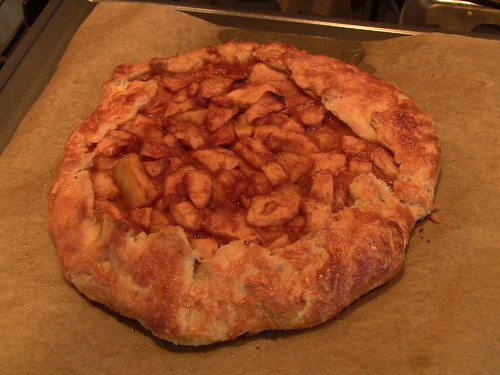
Thanks, Caroline. This one’s a winner!
Some Nuts
Since reading Txfarmer’s blog entry about pecan buns made with brioche dough (http://www.thefreshloaf.com/node/21208/pull-apart-pecan-buns-amp-frangipane-persimmon-brioche-tarts-what-do-leftover-brioche-dou), I knew I was a goner. My wife and I both love nuts, sugar, cinnamon and butter. And these gooey brioche balls are as good as it gets.
I’d never made brioche dough before. I settled on Peter Reinhart’s “Middle Class Brioche” from A Bread Baker’s Apprentice. The book describes the process very well. Hand-massaging a half pound of butter into the dough was almost too sensual. It poofed up hugely in the fridge over night. And the next day, I formed 24 airy butter balls, dipped them in more butter, rolled them in cinnamon sugar, plopped them on a bed of yet more butter and pecan parts, slathered them with a paste of cinnamon sugar and—yes—even more butter, and baked them, with my nose pressed against the oven vent. The results were absolutely heavenly! Melt-in-the-mouth dough encased in cinnamon-sugar, sticky with caramel and crunchy with nuts. As we say around here, “what’s not to like?”
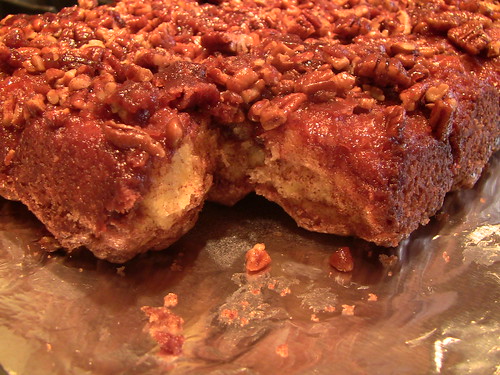
With the last bit of brioche dough, I made some nice muffins.
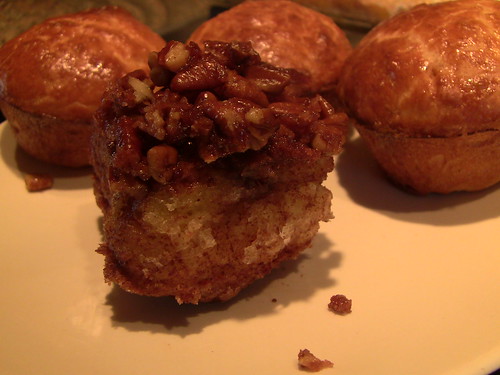
A nice healthy breakfast.

Thanks for the great buns, Txfarmer!
Some More Fruit
Many years ago, we were invited to lunch at the home of one my senior partners. His wife was quite a cook, and baker! She made very tart lemon bars. You know, the kind with short bread topped with a lemon curd. They were the best I’d ever had, and I asked her for the recipe. I used to make them fairly regularly, but it’s been years. Having gotten a bag of beautiful lemons, these lemon bars just popped back into my head and would not go away. Though they have almost as much butter as the pecan buns, they taste so fruity, they have to be good for you.
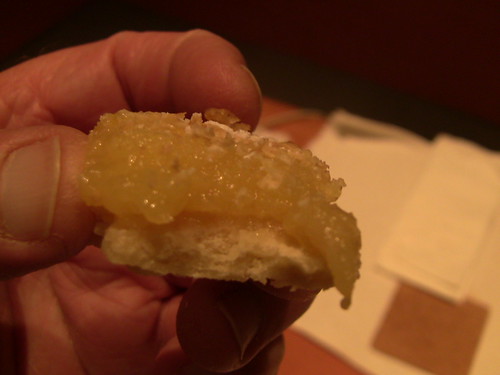
Some Bread (Still a Little Sweet)
Though the sweet things I baked all have a bit of flour in them to hold the butter together, it was time to bake bread! And we had a large quantity of leftover leg of lamb. So I baked my absolutely favorite sandwich bread—Challah. This was my second try at Glezer’s “My Challah”. And, again, it came out nicely. A couple new twists (pun intended) this time: I used Central Milling Co.’s Organic Artisan Baker’s Craft flour and filtered water from our trusty well (the higher-hydration kind of water from our very wet Winter). The malted barley in the flour may have added a bit extra crunch in the crust.

And the Challah was perfect for sandwiches of sliced lamb, sliced cucumber, and lemon-garlic-mustard sauce. I’ll leave the sheep head to Hansjoakim.
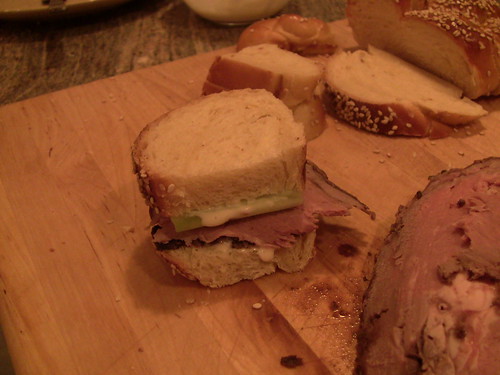
The Challah-making process is now becoming familiar, and I feel ready to try a sourdough version, and maybe one of those beautiful round braided things.
Serious Hearth Bread To Follow
In the last couple days, I have been baking a couple hearth breads. They, too, made be very happy. My report will follow in the next blog post.
Wishing that you all enjoy the sweetness of good memories. And that the new year holds more.
Glenn